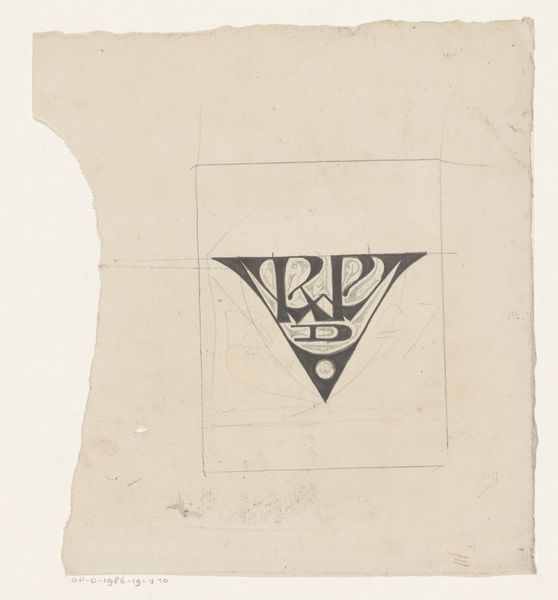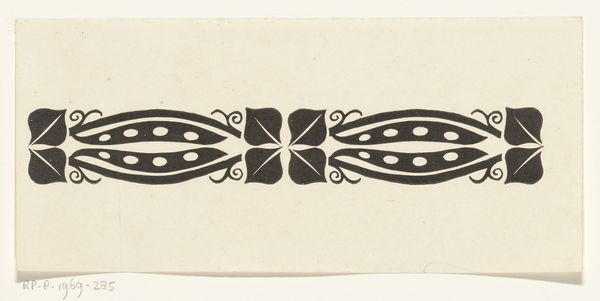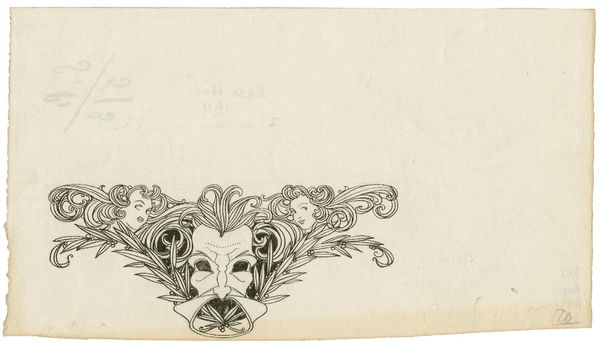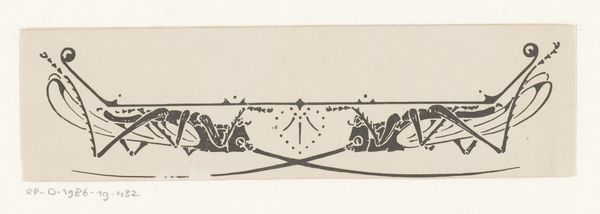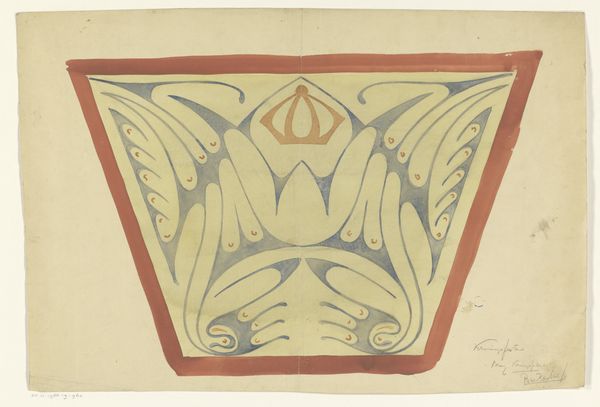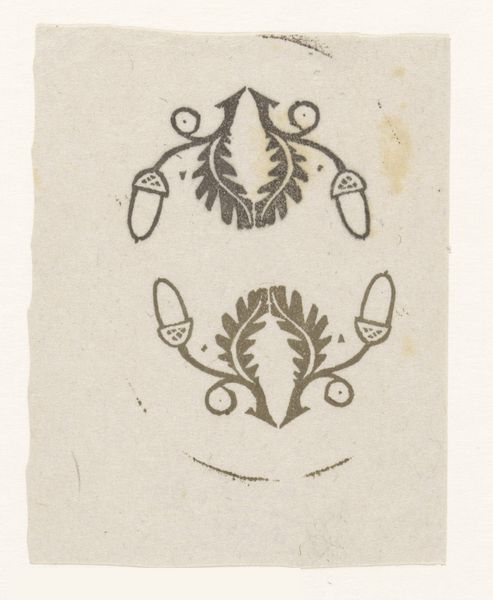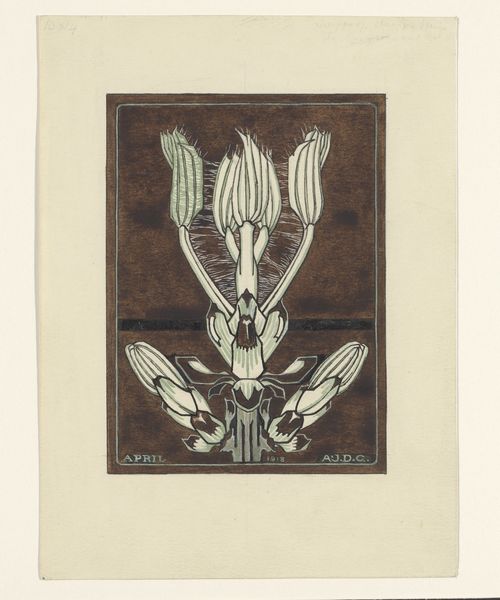
drawing, print, ink, woodcut
#
drawing
# print
#
pen sketch
#
pencil sketch
#
bird
#
ink
#
ink drawing experimentation
#
geometric
#
woodcut
#
line
#
symbolism
Dimensions: height 65 mm, width 94 mm
Copyright: Rijks Museum: Open Domain
Curator: The work before us is "Vogels," dating from around 1910, crafted by Bernard Willem Wierink. It’s a compelling woodcut and ink print housed here at the Rijksmuseum. Editor: My first thought is symmetry; it's immediately striking. There’s something quite serene yet also a bit unsettling in its precise balance. The stark contrast really draws the eye to those bird-like forms. Curator: The period is interesting. Symbolism was very prevalent in artistic circles at this time and in many ways can be seen as an opposition to rational positivism, thus becoming a very important source of artistic subjectivity and ideas for self-expression. There's clearly some impact on this artwork with it's stark symbolism, simple colors, and focus on animals. It gives off an emotional intensity of the time that would soon lead into the social disruptions and wars of the early 20th century. Editor: Absolutely, and consider the avian imagery itself. Birds often symbolize freedom, the soul, and even communication between worlds in many cultures. But here, these aren't soaring birds; they’re fixed, almost trapped, within this geometrical frame. The very design invokes earlier art like medieval crests or perhaps something heraldic. Curator: The interesting thing about these popular and historical images is they represent societal control, so placing these 'free' figures within those frameworks can show the political restraints imposed on common people through governance and power. Editor: That rings true when we reflect on Wierink and the institutional forces he dealt with. It speaks to this tension between individual expression and societal constraints. It also invokes earlier superstitions where these creatures were seen as divine guides that could offer visions of the afterlife to individuals. Curator: Which also shows its break with naturalism, in favor of visual devices charged with emotional weight. It becomes quite self-referential. How do you think this contributes to how we interpret and understand such images in modern society and institutions such as museums? Editor: By inviting reflection on those very cultural legacies and by allowing our viewers to reconsider symbols and archetypes inherited from previous generations in the hopes of creating cultural connections over time. Curator: Well said! Wierink’s "Vogels" allows us to see not just a static image, but a dynamic conversation between artistic ambition, social critique, and lasting imagery. Editor: Precisely. It's a journey through visual culture, psychology, and history all condensed into a potent little print.
Comments
No comments
Be the first to comment and join the conversation on the ultimate creative platform.


